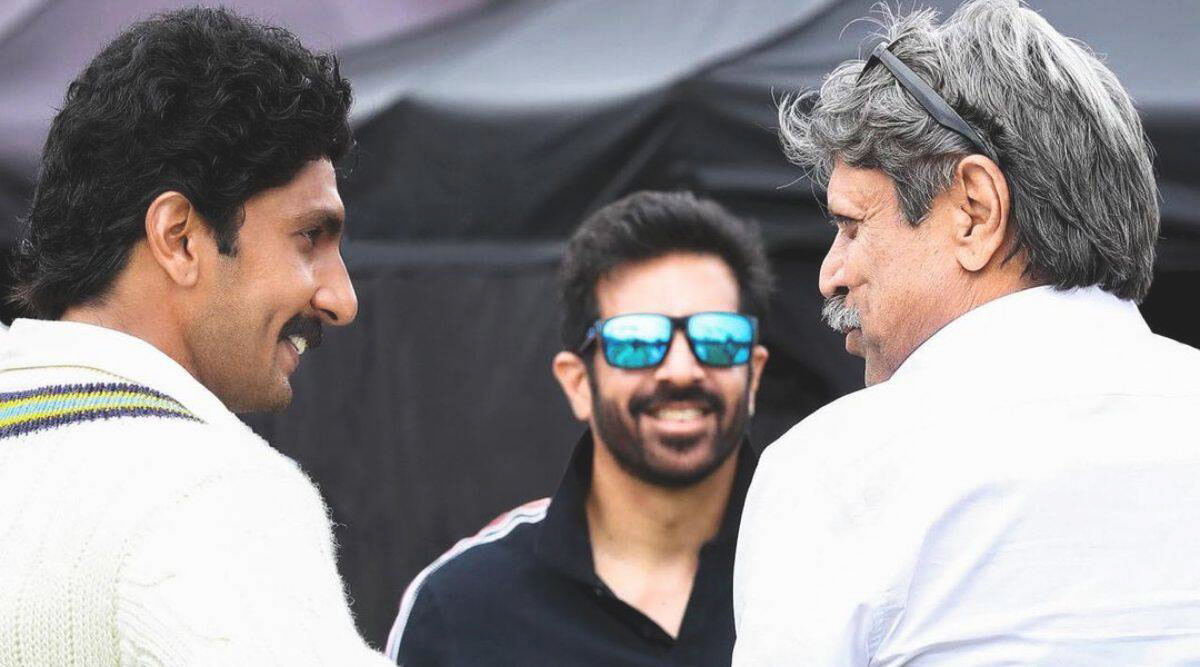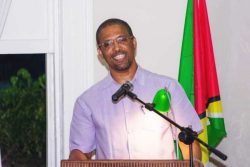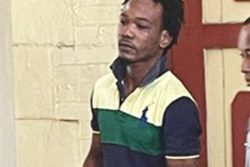By Roger Seymour
In this week’s edition of In Search of West Indies Cricket, Roger Seymour examines the making of Kabir Khan’s epic film 83 and the legendary cricket match it pays homage to. There are no real spoilers here as the intention is to provide insight.
Creating a sports film of one of the biggest upsets in the history of international sporting events – India’s triumph over the West Indies, two-time defending champions in the 1983 Prudential World Cup Final – had to be a daunting task. One imagines there would have been concerns about whether the current generation, weaned on instant cricket of the T20 blend, would be interested in a film about a 50-over tournament from the last century. Especially one where the players have all drifted off into the sunset.
Over a decade in the making, the film 83, one of the most anticipated in Indian cinema history, was initially scheduled to be released on 10th April, 2020, but fell foul to the restrictions of the Covid-19 pandemic. After several postponements, it was finally released worldwide in 80 countries on 24th December, 2021 in five languages: Hindi (with English subtitles), Telugu, Tamil, Malayalam and Kannada.
The Bollywood blockbuster was co-written (one of four writers), directed and co-produced by well known Indian film director, Kabir Khan. His other credits include Bajranji Bhaijaan (2015) [no writing credit], Tubelight (2017) and The Forgotten Army – Azaadi ke liye (2020). Current heartthrob Ranveer Singh plays Kapil Dev, the Indian Captain, and his wife, Deepika Padukone, one of the eight co-producers, acts as his reel wife, Romi Dev.
One of the first stumbling blocks to making a film of this nature is getting the permission of those whose lives are being portrayed and Dev, ‘the Haryana Hurricane’, as he is popularly referred to at home, was rather reluctant at the inception but agreed once Khan assured him that the film would be about the entire team. Indeed, a film of this nature will only work if it is as authentic as possible in most aspects, with artistic liberties heavily tempered, hence the compulsion for extensive research and an exceptional script.
In an interview with The Times of India, just before the film’s release, Khan acknowledged the weight on his shoulders, “You know, 83 is a big responsibility for me. I knew if I don’t recreate this correctly, the country will not forgive me.” Later in the interview, he noted his good fortune, “… I had too much material that I had extracted from my research. You know, I started off as a documentary filmmaker. In fact, I wondered how I would fit so many moments in two-and-half hours [the actual running time is 160 minutes]. I had to let go of some moments. I would say that I had an embarrassment of riches.”
Khan and his co-producers cut no corners or spared no dime when recreating the cricket action. He related to Zoom Digital, “Apart from Ranveer, about whom I had a gut feeling for Kapil Dev, we auditioned over 2,000 boys for the roles of the other cricketers. We actually built a cricket pitch outside our casting director’s office. The boys had to first show their skills at the cricket pitch. Once they passed, they had to interact with Balwinder [Singh] Sandhu, one of the original members of the squad, who was the coach for our cricket team, before advancing further in the selection process. It took a year and a half for the entire casting.”
After the selection of very good actors, who each bore an uncanny resemblance to their real life counterparts, (this was at Khan’s insistence and extensively delayed pre-production planning), and training them in cricket, the producers reportedly got the entire 1983 team to come on board as consultants. The cast then trained at a camp held at the Dharamsala Cricket Ground in April 2019, under the watchful eyes of Sandhu and Yashpal Sharma, who unfortunately died before the film’s release.
The actors cast as the Indian cricketers were: Tahir Raj Bhasin as Sunil Gavaskar, Saqib Saleem as Mohinder Amarnath, Harrdy Sandhu as Madan Lal, Ammy Virk as Balwinder Sandhu, Sahil Khattar as Syed Kirmani, Chirag Patil who plays his father, Sandeep Patil, Adinath Kothare as Dilip Vengsarkar, Dinker Sharma as Kirti Azad, Dhairya Karwa as Ravi Shastri, Jiiva as Krishnamachari Srikkanth, Jatin Sarna as Yashpal Sharma, Nishant Dahiya as Roger Binny and R Badree as Sunil Valson.
Opponents
There was also the task of selecting actors to fulfil the roles of their opponents. A casting call for a feature film on the 1983 World Cup requesting, “Skilled cricketers aged 20 – 40 playing roles for the following teams: West Indies, England, Australia and Zimbabwe” went out on Twitter in the UK in October, 2018. The ad asked applicants to email “headshots, experience level, contact number, location and height” to the company enlisted to facilitate the recruiting. The auditions were held in ten UK locations including London, Kent/Surrey, Manchester, Leeds and Cambridge, with the successful candidates being compensated within the range of £1,000 to £6,000, depending on the time on set, less an agency fee of 20 percent.
Khan’s talent scouts took eight months to assemble the West Indies team. Among those selected were the sons of three famous West Indians who played in the final: Carl Greenidge, who plays his father Gordon; Clive Lloyd’s son Jason, who stands 6’ 8’ and easily filled the boots of Joel ‘Big Bird’ Garner; and Mali Marshall, who plays his father, the late Malcolm Marshall. Our latest Test batsman Tajenarine Chanderpaul was in St Lucia in April, 2018 for a four-day game when a scout showed up at a net session looking for Caribbean players for tryouts. A few months later, he was pleasantly surprised to receive a telephone call informing him that he had landed the role of Larry Gomes. Leeward Islands cricketer Kittian Jacques Taylor enjoyed the honour of playing Viv Richards.
Following endless hours of coaching, perfecting techniques and emulating styles of play, shooting finally began in June 2019 and concluded in October 2019. Filming of the cricket action took place in August, at iconic locations including, Stowe School in Buckinghamshire; Dulwich College and the Osterley Cricket Club in London; the Nevill Ground in Tunbridge Wells, Kent; the Oval in Surrey; and at Lord’s, cricket’s cathedral. Aside from the Nevill Ground, all the other venues have changed considerably since 1983, thus extensive use of computer generated imagery (CGI) was employed to simulate the time period. Khan was able to get access to Lord’s Cricket Ground, not only to the field but also to the famous Long Room and the dressing rooms, to maintain the actuality of the film. Some of the hotel and street scenes were shot in Glasgow, which “has the feel of 1980s London,” according to Cyrus Patel, the film’s UK line producer.
A snapshot of the wardrobe/props list gives an insight as to just how far Khan went to be as authentic as possible; 450 cricket whites and sweaters were ordered, along with, 200 pairs of hand-stitched leather boots, 300 hand-stitched leather balls, 50 pairs of customised pads, 150 customised bats, and 120 specialised helmets, all in the style of that period.
Khan’s epic is so seamless, one is not even aware of the time. The anecdotes, of which there are countless, covering all facets of life on a cricket tour, are smoothly woven into the spectacle allowing the audience to get to know the Indian team almost on a personal basis. As the film rolls along, so does India on the field of play; gelling as a team and overcoming insurmountable odds to reach the final.
On 18th June, 1983, India, following back-to-back losses to Australia and the West Indies, faced Zimbabwe in a must-win game. Batting first, India was instantly in dire straits, reduced to 9 runs for the loss of four wickets, soon to be 17 for five. The BBC cameramen were on strike that day, hence no video footage exists. Khan’s recreation of the day is a work of art, constantly shifting from the commentators, to the field of play, to the crowd, to the press box, to the dressing room, spinning a spider’s web, keeping the audience spellbound.
In an interview prior to the film’s premier, India’s then wicketkeeper, Syed Kirmani, recalled the critical moment, “I walked up to Kapil, who was standing there, his head down. It was a 60-over game and we still had 35 overs left in our innings. I told Kapil, ‘listen Kaps, we are in a do-or-die situation. We just cannot sit and die’. ‘Maar ke marne ka hai (we will go down hitting)’, he said. I tried to inspire him, saying, ‘you are the best hitter in the Indian team. I will take singles and will give you strike. You will try to hit every delivery’. He said, ‘Kiri bhai, humko aur 35 overs khelna hai (we still have to play 35 overs). I will try my best’.” Dev’s best was a spectacular 175 not out, the turning point in India’s tournament. Rob Miller, director of the sports action, creates a marvellous spectacle on the field.
Khan’s period piece should ideally be viewed on a large screen in the cinema. It perfectly captures the mood of the time; a pulsating soundtrack takes the audience on a magic carpet ride as Kapil and his Devils, as the team was referred to, conquered the cricketing world. What happened on 25th June, 1983 was not just a victory on a cricket pitch, it was a turning point in a country’s history. It was a defining moment for India. In Kabir Khan’s words, “This is not a sports movie, it’s a triumph of the human spirit.”
West Indies perspective
The 1983 Prudential World Cup Final remains one of the darkest days in West Indies cricket history. It was a bitter pill from which we still have not recovered. In August 1997, during the Nortel Youth Tournament hosted by Guyana, I had an opportunity to chat with Gus Logie, who was a young member of that 1983 team, but didn’t play in the final. He described the occasion thus: “That was when I found out what it was really like to be a West Indian cricketer. I saw big men crying like children that day, so passionate they were about the game and representing the West Indies.” The current team would do well to embrace that level of commitment.
Trivia: Which actor on the 83 team played in the Ranji Trophy, India’s first class cricket competition?












